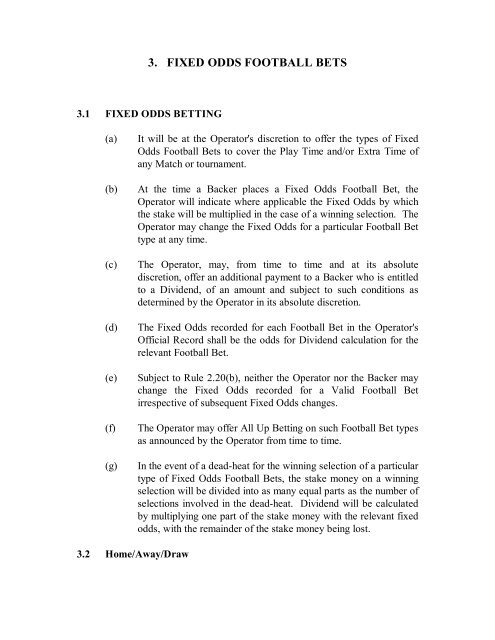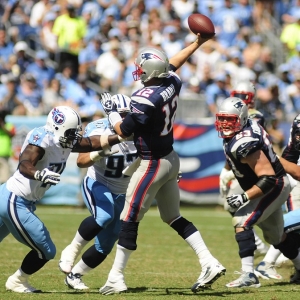The odds to point spread bets are usually around the even mark for football and basketball wagers. Hockey and soccer wagers can sometimes provide slightly skewed odds due to the difficulty in balancing goals. Generally, -110 to -120 odds is the benchmark for most point spread bets based on the sportsbook. How To Read NFL Football Point Spreads Since betting on point spreads in the NFL is the most popular bet that people make, it is probably pretty important that you know what you are doing. The point spreads in the NFL are always alot closer then college football because you are dealing with the best of the best.
- The odds will change heavily if the team makes a late swap. Vegas Odds & Betting Lines. Betting is popular across the US, with many forms taking differing priorities. With Nevada seen as the hub of betting in the country, gamblers flock to Las Vegas to experience the thrills of betting, both on casino games and sporting events.
- Check the odds of the game you want to bet on and find the team that has a “-” sign next to its point spread. Check the number listed after the “-” sign so you know how many points the team needs to win by to pay out the bet. If the team doesn’t win by more than the number listed, then you lose the bet.
- Despite the abundance of football betting markets available, you may lose too much when you don’t know how to play them. While listening to sports news and reading the team’s forms is the key to picking winning bets, here are some uncommon football bets and strategies on how you can stay a step ahead of your game against the bookies.
There are many different variations of how people play football squares, also known as Super Bowl Squares. Most people play during the Super Bowl, but squares can be played for any other game, or in some cases you can use the same squares for multiple games (Example: NFL Playoffs). Basics of the Game:
- Start with an empty 10 by 10 grid. This will give you 100 Squares that you can let your Users select.
- Now assign one team to the columns, and one to the rows.
- Begin recruiting your Users to join your Football Squares pool. If you use our site to Play Football Squares Online, this will be a much easier process since you can simply email everyone the link to your site and let them choose their squares. If you decide to use a Spreadsheet or Printable Sheet, then this process will take you a lot more time simply because of having to try and share a single sheet or spreadsheet.
- Once all the squares have been filled, it is time to assign the numbers. Randomly assign numbers 0 through 9 to each column, followed by doing the same for each row. Now each square represents a specific score in the game based on the column and row numbers.
- Your Football Squares grid is now complete, and you just need to wait til the game is played to determine who will be your winners. A winner is usually determined at the end of the 1st quarter, 2nd quarter, 3rd quarter, and Final Game score. The winner is determined by looking at the last number in each of the teams' score, and then matching those numbers on the grid and seeing which square intersects those two numbers. If the score at the end of the game is AFC 33, and NFC 24, then the square on the grid that has AFC with number 3, and NFC number 4, would be the winner.
- Payouts for the winners vary depending on your setup, but usually the 1st through 3rd quarter get about 20% of the pot each, and the final score would get the remaining 40%.
How To Read Football Betting Spreads
Other Options
- Assign a different set of numbers per Quarter
- Assign a different set of numbers per Half
- Use a 5 by 5 grid, where each square has two numbers for each team
How to Read Betting Lines

If your sports betting experience consists mostly of office pools during March Madness or a casual wager between you and a friend while you watch the Super Bowl, the transition to serious sports betting means learning how to read betting lines. The biggest difference between making the kind of casual bets mentioned above and placing wagers with online sportsbooks or at brick-and-mortar bookshops is the use of sports betting lines. Casual wagers usually involve each person in the bet picking one team to win, then wagering an equal amount, say $20 or $30. Professional bookmakers, online sports betting exchanges, and sports betting facilities in casinos have a more complex system for offering wagers on sporting events, in part to ensure profit on the part of the book, and in part to present a standardized representation of odds.

Let’s start with the basics: what do sports bettors mean when they talk about a ‘line?’ The word line, in the language of a sportsbook, can refer to either the odds and/or a point spread in any sports contest. Let’s take a look at an imaginary line the way you’d read it off the board sitting in a Vegas sports betting lounge or on the screen at your online book. Let’s imagine a game between the New York Giants and the Dallas Cowboys. Your book’s NFL betting line might look something like this:
DAL -7.5-110 -405
NYG +7.5-110 +300
56.5 ov-110
What may look like a jumble of words, numbers, and punctuation is actually a precise and easy-to-read breakdown of the various odds and point spread details your book is offering. Here is a breakdown of each unit of information given above. Once you understand each part of the jumbled details above, you’ll be able to read a sports betting line with confidence.
The Point Spread
Obviously, the first three letters on the top two lines of the three-line package of symbols represents a team in the game you’re wagering on; NYG stands for the New York Giants, while DAL stands for the Dallas Cowboys. The number next to each team’s name is known as the spread or the point spread. Wagers on the point spread are among the most popular sports wagers in the world. The reason this wager is popular is that it doesn’t matter which team wins or loses; what matters is the amount of points the teams score, and whether or not the team you place your money on beats the difference in points (the ‘spread’) or not.
Placing a point spread bet means gambling on how much a team will win or lose by. In our above example, the Cowboys are the favorite. How do we know that? The minus symbol in front of the point spread indicates that the bookmaker thinks the final score will have Dallas winning by 7.5 points or more. The underdog, in our example that’s the New York Giants, will always be indicated with a plus sign. If you wager on the Cowboys on the point spread, America’s Team will have to win by at least 8 points for your wager to pay off. Should the Cowboys win by less than 8 points, your bet is lost.
A wager on the Giants on the spread does not mean that New York has to win the game in order for you to win cash. All the G-Men have to do is come within 8 points of the ‘boys, and you’re a winner. You determine a winning or losing point spread by adding or subtracting 7.5 from the final score, depending on which side you laid your bet. If you’re confident that New York will at least come within a touchdown of beating the Cowboys, or beating them outright, then you’d wager on the spread in favor of New York.
A quick word on that annoying half point in the point spread – most lines you’ll come across will use half points, but it’s not standard practice across the board. When you see a line with a full number instead of a number with a half point, your wager could end up as a push. In our example, if the line were 7 instead of 7.5 and the final difference in points was exactly 7, your wager is returned to you, and neither you nor the book makes money.
What’s the function of the second number in the line?
The second number in our example (-110 for both teams) tells you how much you have to wager in order to win $100. It’s an easy way to calculate how much you’ll win if your bet pays off, presented in units of $100 at a time for simplicity’s sake. Most of the time, these two numbers will be the same, because oddsmakers want to set lines so that they get as much action on the underdog as on the favorite, guaranteeing them a profit. If a book gets a single bet of $110 (by a customer hoping to win $100) on the Cowboys and a single bet of $110 on the Giants, it will have taken in $220, but will only have to pay back $210 to whichever customer wins the bet. That’s a guaranteed profit of $10, and since sportsbooks take far more than a single bet in either direction, they stand to earn that seemingly small amount of profit many times over. The $10 difference between what you wager and what you win is known as juice or vig in the sports betting industry, and it’s the way books earn their bread and butter.
What does the last number in the line mean?

The last number in the top two rows of our sports line example is known as the money line. If you’re not interested in betting on the point spread, you can wager on a team to win outright. The plus sign next to the underdog (in our case, the Giants) indicates how much money you’ll earn for every $100 you bet on the money line. Conversely, the minus sign next to the favorite’s line tells you how much you have to wager in order to win $100. In our example, a $100 wager on the Giants earns you $300 should they pull off the upset, while a bet of $405 on the Cowboys will net you an extra $100. Representing odds in units of $100 makes placing different size bets easy; if you want to bet $10 on the Giants, you stand to earn $30 if they win, while a $40.50 bet on the Cowboys will net you an additional $10.

What does the bottom row of numbers and letters mean?

The final line of information in our example line is the over-under. Wagers placed on the over-under have nothing to do with which team wins or the difference between the points they score, but rather the combined number of points both teams will score in the game.
The first number (56.5 in our sample line) is the book’s predicted total score, while the second number (110 in our Giants/Cowboys rivalry game) is how much a punter has to bet in order to win $100. If you were to bet the over-under on this game, you’ll have to decide whether you think the combined score of both teams will be higher or lower than the number put up by the book. Let’s say you bet the over, assuming the game will be a shootout between two talented offenses, you’re hoping that the final score will be anything that totals 57 or more. It could be Dallas 54, New York 3, or any other point combination that adds up to 57 or more and your bet will win. Betting the under means that the two teams cannot score more than 56 points combined, or else you lose your bet.
How To Read Bets Football Players
Reading sports betting lines becomes easier with practice and experience with different sporting events. What looks like a jumble of letters and numbers actually gives a lot of information in a tiny amount of space. Different sports have different types of wagers available, such as the run line in baseball or the puck line in hockey, both of which replace the money line found in our football example. The more experience you have watching and gambling on different sports, the faster you’ll be able to read betting lines.